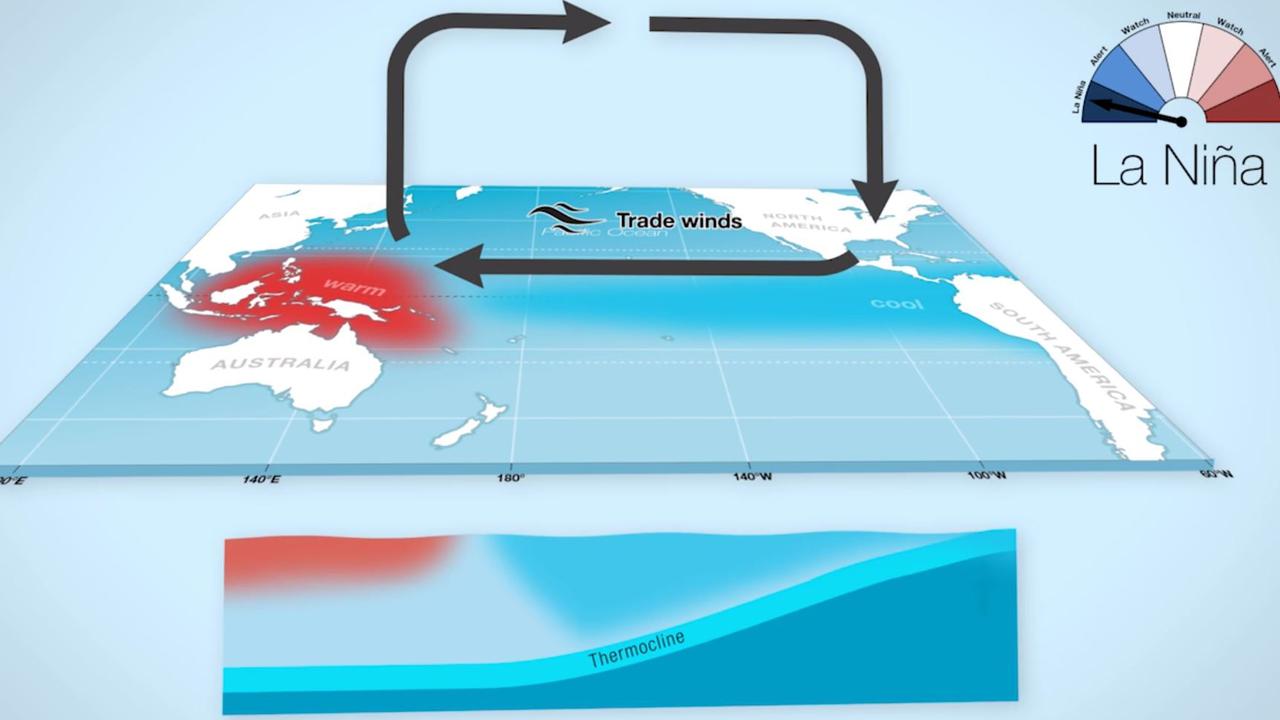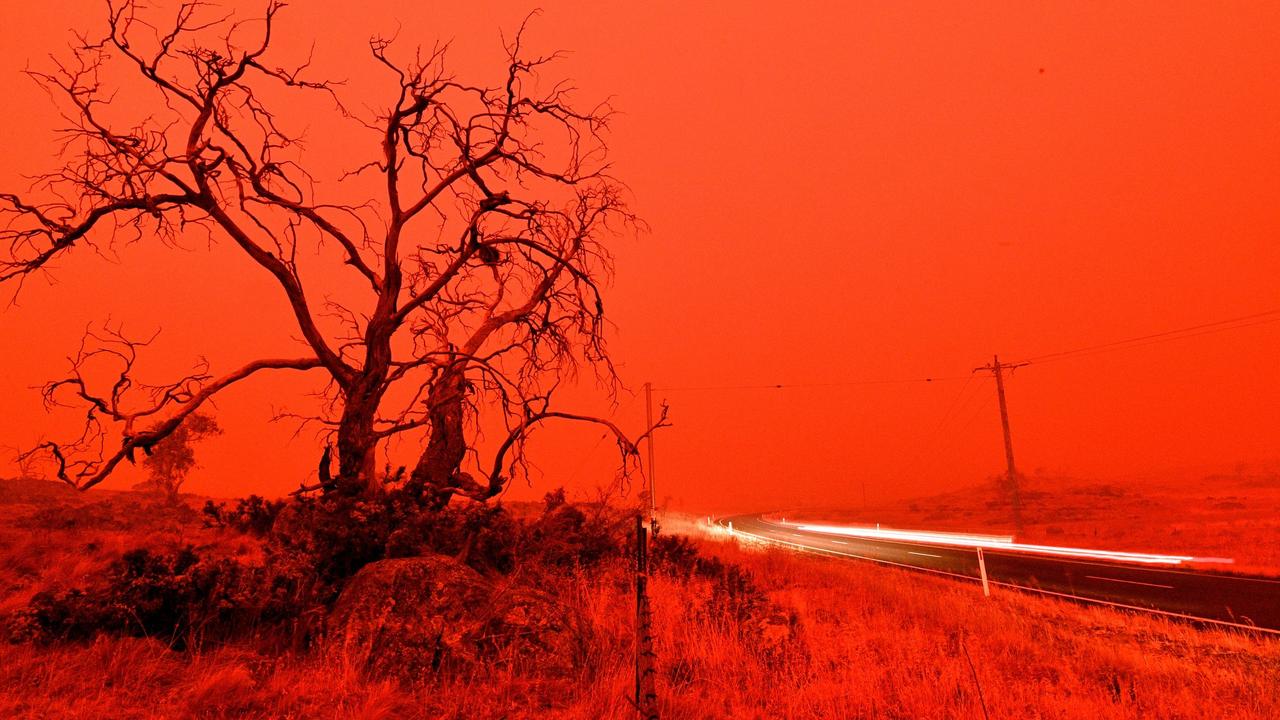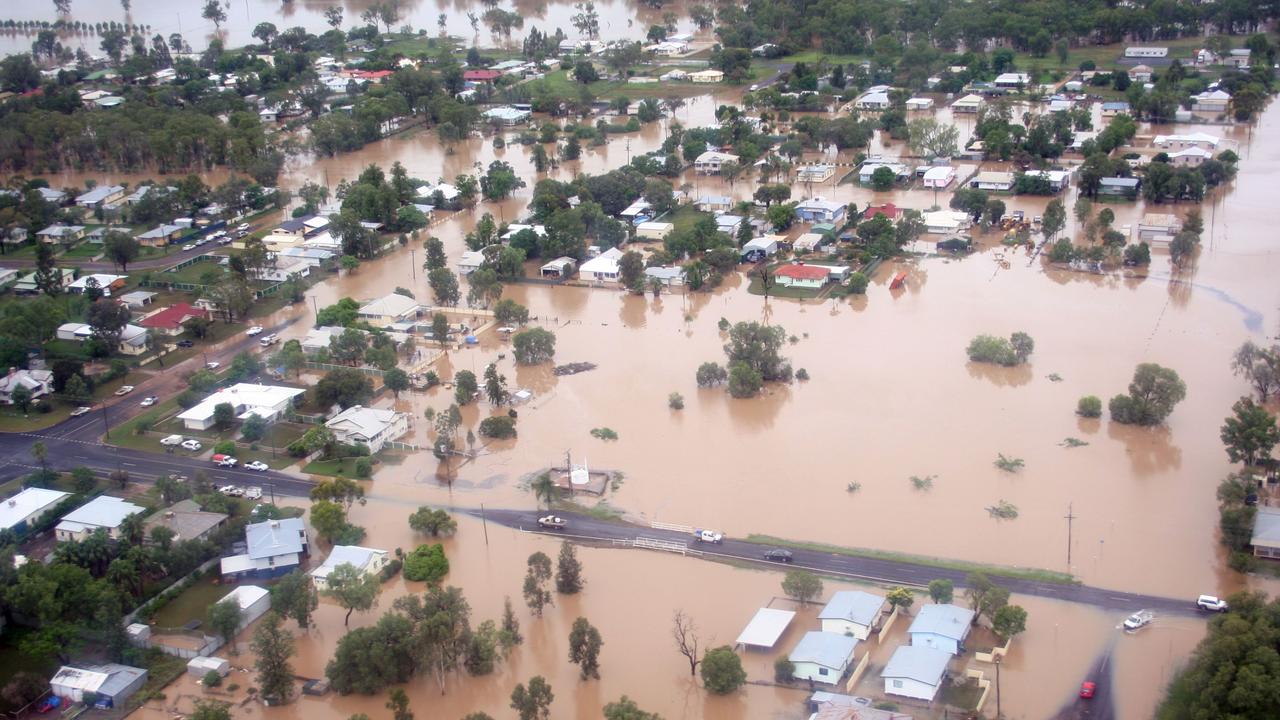La Nina declared: Unexpected effect of climate driver
We’re set for a wet and cool summer. But one unexpected side effect of the just declared La Nina climate driver could make it deadly.
It’s official. For the first time in a decade a La Nina event has been declared by the Bureau of Meteorology.
La Nina events often bring more moisture to Australia and can lead to floods and ferocious cyclone seasons.
There’s also an assumption that because of all the rainfall, bushfires will be banished – or at the very least lessened.
But bushfire experts and climate watchers have said that may not be the case. This La Nina could actually lead to bushfires that otherwise wouldn’t have occurred.
It’s the unexpected and grim worry for Australia’s La Nina summer.
“We’ve seen devastating bushfires during La Nina events,” a climate scientist has told news.com.au.
RELATED: The huge weather change coming this summer – La Nina declared

UNEXPECTED EFFECT OF LA NINA
The cooling phase of the El Nino Southern Oscillation, La Nina to you and me, bubbles up when strong winds blow from east to west which drags cooler water up from the depths of the ocean in the central and eastern equatorial Pacific.
These winds then push warmer water off the coast of Australia closer to the continent. That aids in the creation of more clouds and so moisture and windier conditions for the continent.
It’s the reverse for the Americas where moisture is sucked away from the continent which is one of the reasons behind the US’ terrible recent fires.
“Australia can expect a summer of floods, storms and cyclones as La Nina conditions are officially declared,” said Sky News Weather senior meteorologist Tom Saunders.
“The last La Nina was in 2017 which had very little effect. But the last fully fledged La Nina event was from mid-2010 to early 2012 and that event that produced Australia’s wettest 24 months on record.”
All that moisture could have very beneficial effects with the weather. Dams should fill and crops should love it, so long as they’re not washed away.
Of course, wet soil and vegetation isn’t ideal conditions for bushfires.
But La Nina has a bushfire sting in its tail – as the New South Wales Fire and Rescue Service laid out in a tweet on Tuesday.
“We are one of the few groups who wouldn’t mind a wet spring and summer,” the tweet said.
“However increased rain is likely to lead to increased grass growth. This may prove problematic later in the season.”
We here at the #NSWRFS are one of the few groups who wouldn't mind a wet, but not too wet, spring and summer. However increased rain is likely to lead to increased grass growth. This may prove problematic later in the fire season. https://t.co/6lwvwx7LcQ
— NSW RFS (@NSWRFS) September 29, 2020
That was backed up the Bushfire and Natural Hazards Cooperative Research Centre (Bushfire CRC), a government agency that brings together experts from the emergency services, land management agencies and other bodies.
It has said the effects of La Nina on bushfires are not black and white, may not be the same all over Australia and a lot can depend on when those rains arrive and whether they are steady or all in one dump.
RELATED: Nino 3.4 – Pacific Ocean patch that could change Australia’s weather

WEAK LA NINA A CONCERN
One of the worries is that this La Nina event is thought to be relatively weak. That means it could dissipate within months providing just enough moisture for lots of new growth ready to be baked – and set alight – by an unforgiving sun in late summer.
“While these wetter conditions in eastern Australia will help in the short-term, they may lead to an increase in the risk of fast running fires in grasslands and cropping areas over summer,” the Bushfire CRC said in its AugustHazard Note.
A weak La Nina could also simply fail to produce the level of rain needed to counteract the many dry years we’ve experienced recently.
One of the most dangerous areas is south east Queensland. Even if La Nina produces cyclones over tropical parts of the state, if the dry south misses out, bushfires are a real fear. It’s a similar situation in northern NSW.
La Ninas often affect South Australia less than the south eastern states and the Bushfire CRC has said the current outlook may not see enough rainfall in the state to overcome the current soil conditions.
Western Australia is likely to see very little effect from La Nina and there are above normal fire conditions in some areas, particularly the state’s north.
RELATED: In Australia, we’ve got our seasons all wrong

DEVASTATING
Dr Joelle Gergis, a climate scientist at Australian National University told news.com.au there was a “very good chance” a La Nina event in tandem with a negative Indian Ocean Diploe (a similar climate driver to the west of Australia which is also underway) would lead to increased vegetation that can fuel summer bushfire.
However, the BOM’s seasonal forecast does suggest the moisture may continue far into summer and that could keep the worst fires at bay.
“That said, there are instances in our history when we have seen devastating bushfires during La Nina events,” Dr Gergis said. “The stand out examples are Black Saturday in February 2009 and Black Friday in January 1939.”
Climate change is in the mix too. Some recent La Nina years, that are usually cooler than El Nino events, are now hotter than the average El Nino years of the past.
“Given that 2020 is on track to be among the globe’s warmest on record it is possible that we could see above average temperatures in Australia that may favour summer bushfires.”
The horror bushfires of last summer have already burnt a lot of fuel which should shield them.
“It’s the areas spared during our Black Summer that we need to worry about,” said Dr Gergis.

Even if Australia is saved from a widespread and ferocious bushfire season, there is plenty of other drama La Nina could bring.
The deadly Cyclone Yasi came ashore during La Nina conditions in 2009. The 2010-2011 Queensland floods which caused 33 fatalities, affected 200,000 other people and ripped $2.3 billion out of the economy, was slap-bang in the middle of a full throttle La Nina.
La Nina may well bring a welcome change to Australia’s parched east. But its negative effects should not be underestimated.




